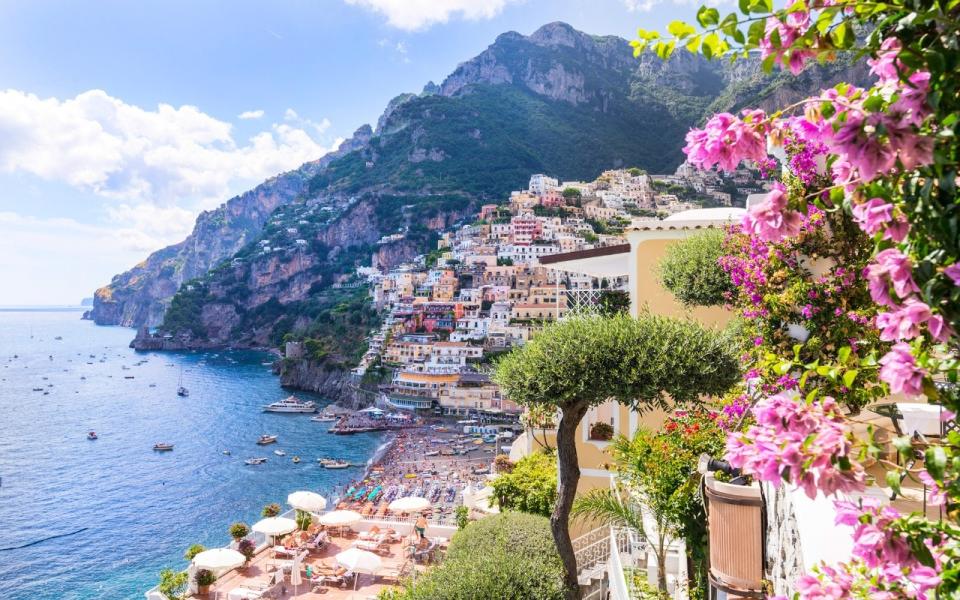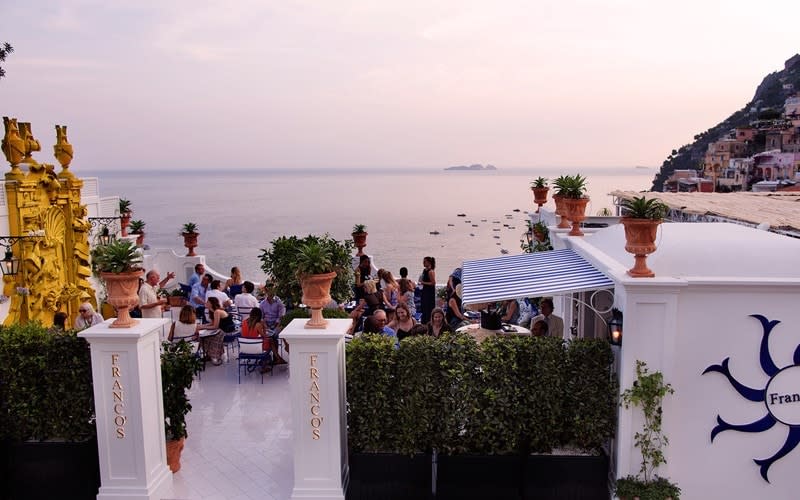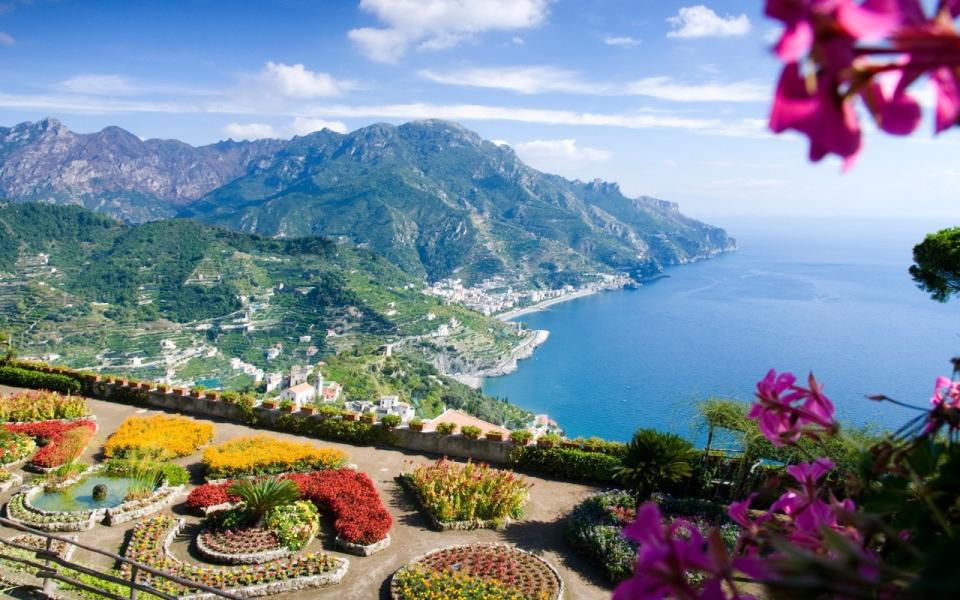An insider's guide to the Amalfi Coast: where to stay and what to do
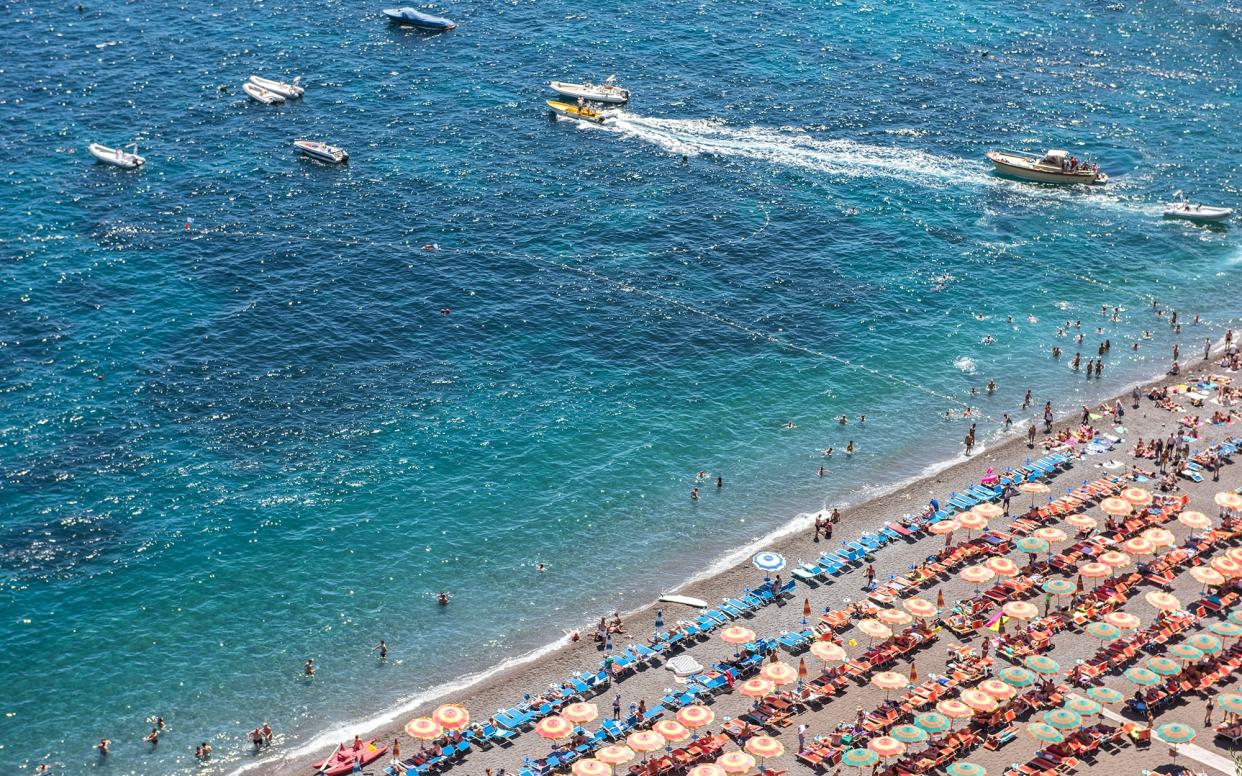
Expert guide to the Amalfi Coast
Overview Overview
Restaurants Restaurants
Nightlife Nightlife
Things to do Things to do
Hotels Hotels
Shopping Shopping
A visit to the Amalfi Coast needs to be taken slowly, with a only a few quintessential experiences to have on your to do list: going on a boat trip, renting one of the colour-coded sunbeds at a lido, and visiting the glamorous island of Capri. Even if you want to fit in some culture, schedule visits to churches, museums and palazzos around lazy lunches, dips in the shimmering sea, sunset aperitivi or simply hanging out and basking in those extraordinary vistas.
Positano and around
Impossibly picturesque Positano
Positano is a stage set of a town, its cluster of cubed, multi-hued buildings tumbling down the mountainside and closing around the grey shingle beach around which life revolves in the summer months. Once one of Italy’s most exclusive resorts, it has been thoroughly discovered by mass-tourism, but if you stay overnight, or come out of season, it’s still possible to get an elusive whiff of la dolce vita.
Insider’s tip: The only level street is the beachside walk. Anywhere else you need to go means negotiating lots of steep steps, so comfortable shoes are a must. Also, to get the best of the astonishing views, start in Positano and drive the cornice from west to east.
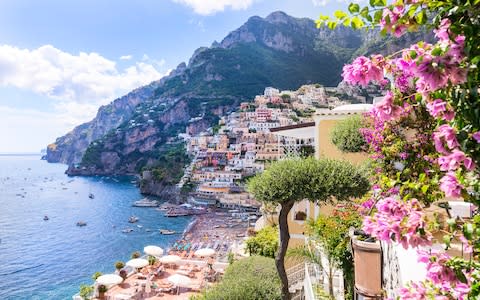
• The best honeymoon hotels on the Amalfi Coast
Take a boat ride along the coast
To get a feel for the topography of this coast, you need to get down to sea level, so think about renting a boat. On a gentle chug in either direction from Positano, you’ll discover fabulous villas with terraces suspended over the sea, grottoes tucked into folds in the cliffs, imposing Saracen defence towers, tiny scraps of pebble beach and waterside restaurants perfect for a fishy lunch. You can even nip over to Capri for the day.
Insider’s tip: The Lucibella booth on Positano beach (00 39 089 875032) will hire you a boat from about €35 (£31) an hour for a small wooden lancia.

Join the bronzed bodies at Marina di Cantone
Lying just along the coast to the west of Positano, this pretty little resort makes a good day trip either by car or by boat although in July and August, every scrap of pebbly beach is occupied by bronzing bodies. Outside those months, it is a great spot for some serious sunbathing and swimming and has a laid-back, low-key vibe. Finish your day with a sundowner – a Campari Spritz maybe – at one of the beach bars.
Insider’s tip: Don’t miss a plate of spaghetti alle zucchini looking out to sea at Lo Scoglio (hotelloscoglio.com; 0039 081 808 1026); it’s one of the most famous restaurants on this stretch of coast.

• The best Amalfi Coast hotels with pools
A day at the beach
In summer, life revolves around the beach; people come to eat, drink, sleep, swim, chat, play cards, shower and eat some more. Any stretch of sand is occupied by neat rows of colour-coded sunbeds and umbrellas all belonging to a particular lido where there will be a bar and restaurant (usually open for breakfast, lunch and dinner), showers and changing rooms. You pay for these services of course, but it’s all very Italian.
Insider’s tip: In Positano, the main beach is where people go to see and be seen, but the locals walk along the cliff path to smaller Fornillo where there are several good bars and restaurants. Other beaches in the area include Gavitella beach (rocks rather than sand) below Praiano; Marina Grande in Amalfi; and the beach at Maiore, the longest in the area (see below).

Walking with the Gods
The higher you climb in this part of the world, the more breathtaking the views, and this stretch of coastline is a paradise for walkers. The Sorrentine peninsula is criss-crossed by a network of tracks and old mule paths, the most famous of which is the Footpath of the Gods that follows a panoramic ridge between Bomerano and Nocelle, just above Positano. The whole walk will take from four to five hours, or you can shorten it to three by stopping in Nocelle.
Insider’s tip:The walking map of the Monte Lattari published by the CAI (Club Alpino Italiano) and available in local bookshops covers the whole peninsula.

Visit Capri for a slice of la dolce vita
The name Capri (that’s Cah-pri, not Ca-pree) conjures up heady images of jet-set glamour, mega-yachts slicing through shimmering blue seas and dazzling whitewashed villages splashed with magenta bougainvillea. Then there is Emperor Tiberius’s clifftop villa, Axel Munthe’s Villa San Michele, the Grotta Azzurra and charming, laid-back Anacapri. Round the day off with a Campari in the glamorous Piazzetta. Boats and hydrofoils depart regularly from Positano.
Insider’s tip: For a taste of Capri beyond the crowds, stay overnight. Once the last hydrofoil has left, the island breathes a collective sigh of relief.
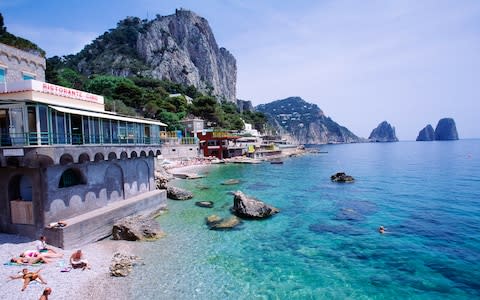
• The best Amalfi Coast restaurants
Drive the road of 1,000 bends
One of the most magnificent coastal drives in the world is also one of the most frustrating, provoking trepidation, road rage, nausea and wonder at the sheer beauty of it all in equal doses. Be prepared for agonisingly slow progress: the road is only just wide enough for two lanes of traffic and inexperienced drivers often get stuck.
Insider's tip: The key is to make sure that someone else is at the wheel for this nail-biting, cliff-hugger of a ride, so take the SITA bus or hire a car with an experienced local driver (contact the local tourist office for a reliable company).

Praiano to Amalfi
Praiano and Marina di Praia
A couple of bends in the road east of Positano lies the sleepy village of Praiano, a less glitzy alternative to its high-profile neighbour. Really just a sprawling cluster of pretty, whitewashed houses spilling down to the sea with a friendly bar and a huge church, it makes a good base for exploring the area. Its pretty seaside extension, Marina di Praia, is wedged between towering cliffs with a scrap of sand, a bar and a couple of restaurants.
Insider’s tip: Gavitella beach, accessed via steep steps from Praiano, is a great spot for sundowners and has a couple of bars and a good restaurant.

Descend into the cave of Grotta dello Smeraldo
Capri has its Blue Grotto; the costiera has an emerald green version. A sea cave named for the translucent green light that filters in through an underwater arch, it lies around five kilometres west of Amalfi; you’ll know when you’ve reached the entrance on the SS163 by all the coaches parked nearby. Access is via a lift that descends into the cave where visitors are loaded into little rowing boats.
Insider’s tip: a much more pleasant way to visit the grotto is via a boat trip from Positano or Amalfi, and you will get a different perspective on the coastline too.
Address: On the SS163, 1 km west of Conca dei Marini
Contact: Amalfi Tourist Office (00 30 089 871107)
Opening times: daily 9.30am-4pm
Prices: £
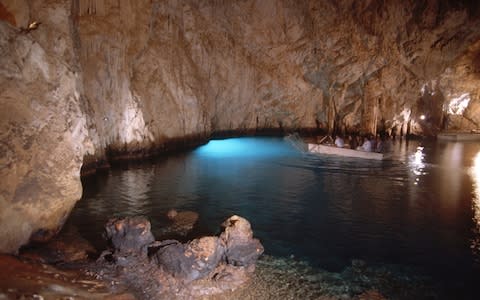
• The best Amalfi Coast bars and nightlife
Visit the Costiera's busiest town
The busiest town on the Costiera, famous for paper-making and lemons, Amalfi was once a glorious Maritime Republic. Although unbearably crowded in high season it is a very pretty little resort wedged between the sea and the mountains and fringed by lemon terraces. At its heart is Piazza del Duomo, an open-air salon crowded with café tables and tourists and dominated by the striped façade of the Norman-Arab style cathedral atop a flight of steep steps.
Insider’s tip:As a general rule of thumb, if you want to buy a bottle of limoncello to take home, avoid anything too day-glow yellow coloured in a gimmicky bottle. Buy from Antichi Sapori d’Amalfi (Via Duca Mansone I, 39; 00 39 089 872062).

Climb the steps to Sant'Andrea
Standing proud atop a steep flight of steps, Amalfi’s Arabo-Norman Cattedrale di Sant’Andrea, complete with flamboyant façade, dates back to the ninth century; the magnificent bronze doors were made in Constantinople in 1066. The beautiful Chiostro del Paradiso (entered from the porch) was originally built in 1266 as a burial ground for the local aristocracy and has interlaced, Moorish arches enclosing a garden. The Cappella della Crocifisso houses glittering treasures from the diocese.
Insider’s tip: Visit the crypt, where the mortal remains of Saint Andrew himself lie. They were stolen from Constantinople in 1206; his sarcophagus regularly oozes a ‘miracle’ liquid.
Address: Piazza Duomo, Amalfi
Contact: 00 39 089 871324
Opening times: Mar daily 9.30am-5.15pm; Apr-June & Oct daily 9am-6.45pm; July-Sept daily 9am-7.45pm; Nov-Dec daily 10am-3.45pm. Closed from 7 Jan – end Feb.
Prices: Duomo free, £ Chiostro del Paradiso

Learn about 18th-century paper-making
Since the 13th century, Amalfi has been known for its papermaking. It’s natural setting, wedged into a deep gorge rich with gushing streams that opens into the sea, provided the perfect conditions for the craft to flourish. In the late 18th century, there were 16 paper mills in the area; today there are just two. The small but fascinating Museo della Carta (housed in a 15th-century mill) documents the history of paper-making in Amalfi.
Insider’s tip:The Amalfitani learnt their craft from the Arabs, producing a heavy parchment made from linen and cotton rags called bambagina which you can still buy today – either in the museum shop or at La Scuderia del Duca (Largo Cesareo Console, 8; 00 39 089 872976).
Address: Palazzo Pagliara, Via delle Cartiere 23
Contact: 00 39 089 8304561, museodellacarta.it
Opening times: Mar-Oct daily 10am-6.30pm; Nov-Jan Tue-Sun 10.30am-4pm; closed Feb
Prices: £
• The best shopping on the Amalfi Coast
Atrani to Vietri-sul-mare
Escape the mayhem
Amalfi’s little sister is an off-the-radar gem just round the headland yet worlds away from the crowds. Amazingly, in the heyday of the Republic, Atrani was a posh suburb of the larger town, but now its maze of narrow lanes, pedestrian tunnels, stairways and higgledy-piggledy barrel vaulted houses are a refuge from the mayhem round the corner.
Insider’s tip: The tiny church of San Salvatore de’ Bireto (atop the steps in Piazza Umberto) was the site of the investiture of Amalfi’s doges. The square is a lovely spot for a quiet coffee.

Maiori e Minori
Just east of Amalfi, the low-key resorts of Minori and Maiori are much less crowded that their more glamorous neighbours to the west. Pretty Minori has a small beach, a fantastic pastry shop and the once-grand Villa Romana, where you can see traces of first century AD frescoes and mosaics. Further on, Maiori was once the centre of ship building for the Amalfi Republic; today it is a fascinating contrast of old and new.
Insider’s tip: If it’s a beach holiday you are after, Maiori has the longest stretch of sand on this coast, and is a lot cheaper than staying in Positano. Go for Hotel Botanico San Lazzaro, stacked into the cliff-side of Maoiri’s picturesque old quarter.

Stock up on anchovy sauce
The fishing village of Cetara, just west of Vietri, offers a glimpse of what the whole of the costiera must have been like before the tourists descended. Authentic and un-prettified (at least for now), the cluster of peeling, pastel-hued houses encloses a small beach plus the only working fishing port left on the coast. There’s nothing much to do here except wander the quiet lanes or purchase a bottle of its most famous export, colatura di alici (anchovy sauce).
Insider’s tip: This fermented anchovy essence is thought to have Roman origins and is used to flavour food; you can sample it in any one of the excellent restaurants in town, such as Acqua Pazza (see the restaurant section) or the San Pietro (Piazzetta San Francesco 2; 00 39 089 261 091).
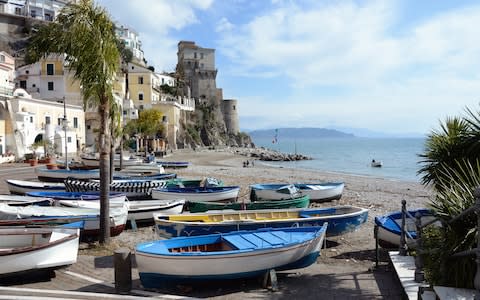
Vietri sul Mare
You can’t move in this part of the world without seeing the typically colourful ceramics produced in Vietri, the gritty little town at the eastern limit of the costiera. Ceramic production here started in the 15th century but reached its peak in the 1500s and 1600s when it became fashionable among the Neapolitan aristocracy. It’s worth popping into the Duomo with its blue and yellow majolica-tiled cupola, a carved and gilded ceiling and 11th-century crucifix. There is a good beach, too, about a kilometre below the town.
Insider’s tip: Ceramics shops vie for space on the main street, but the best place to buy is Ceramiche Artistiche Solimene (see ‘Shopping’).
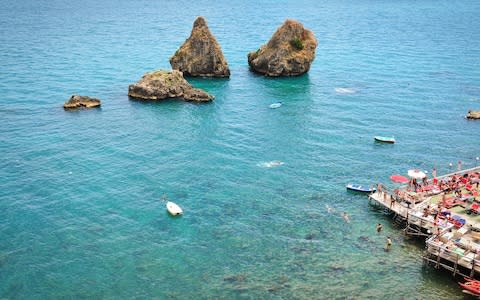
• The best spa hotels on the Amalfi Coast
Ravello
Ravello
Dreamy, romantic Ravello is perched on a 350-metre buttress looking over the shimmering waters of the Gulf of Salerno far below. Removed both physically and in spirit from the hubbub on the coast road, its crumbling palazzi, glorious gardens and rather other-worldly atmosphere has attracted artists, musicians and writers for centuries.
Insider’s tip: The main visitor draws are the gardens at Villa Rufolo and Villa Cimbrone and the magnificent 11th-century cathedral, but it is also a lovely place to just wander the quiet streets followed by a prosecco in the pretty main square.

Villa Cimbrone
The main body of this grand villa dates from the 14th and 15th centuries, but it was re-built in 1904 by Lord Grimthorpe (who designed London’s Big Ben) and subsequently became a popular hangout for the Bloomsbury set. Today the villa is occupied by a luxury hotel, but the magnificent gardens, suspended high over the sea, are open to the public.
Insider’s tip: Greta Garbo and her lover, Leopold Stokowski, took refuge here in the 1937; you can imagine them wandering among the flower beds and pathways to the famous Belvedere of Infinity and admiring the dizzying views of the coast. You too can stay here.
Address: Via Santa Chiara 26, Ravello
Contact: 00 39 089 857459, villacimbrone.com
Opening times: daily 9am-sunset
Prices: ££
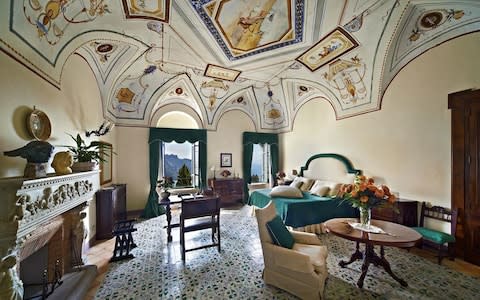
Villa Rufolo
The Rufolo family’s grand but crumbling 13th-century home was bought by Scotsman Sir Francis Neville Reid in the 1850s. The villa today is an eclectic mix of Moorish and classical architecture, but it is the dreamy gardens that attract the visitors. Indeed, Richard Wagner is said to have found inspiration for his ‘Parsifal’ among the Romantic ruins and geometrical flowerbeds.
Insider’s tip: the villa and its gardens are the setting for concerts during the prestigious Ravello Festival. Look out for the concerts at dawn, performed on a spectacular stage suspended from one of the terraces (ravellofestival.com).
Address: Piazza del Duomo, Ravello
Contact: 00 39 089 857621, villarufolo.com
Open: daily 9am-6pm
Price: ££
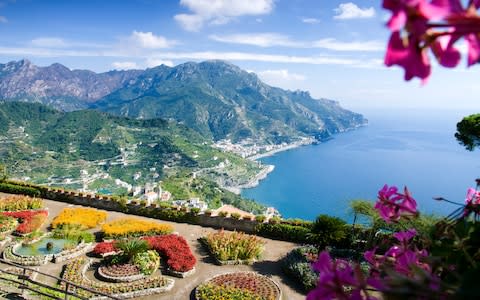
Duomo di Ravello
Ravello’s refreshingly plain cathedral dates from the 11th century and is dedicated to San Pantaleon, the town’s patron saint. It is entered through a pair of magnificent 12th-century bronze doors divided into 54 bas-relief panels, and inside are two famous pulpits; the higher one (the ‘pergamo’) is supported by six lions and twirling columns decorated with mosaics while the other (the ‘ambone’) sports delightful mosaics illustrating Jonah being eaten by the whale and then regurgitated.
Insider’s tip: on the left of the main alter is a chapel dedicated to San Pantaleon with a phial of his blood, said to liquefy each 27 July.
Address: Piazza del Duomo
Contact: 00 39 089 858311, chiesaravello.it
Opening times: daily 9am-noon, 5.30-8pm.
Prices: £


